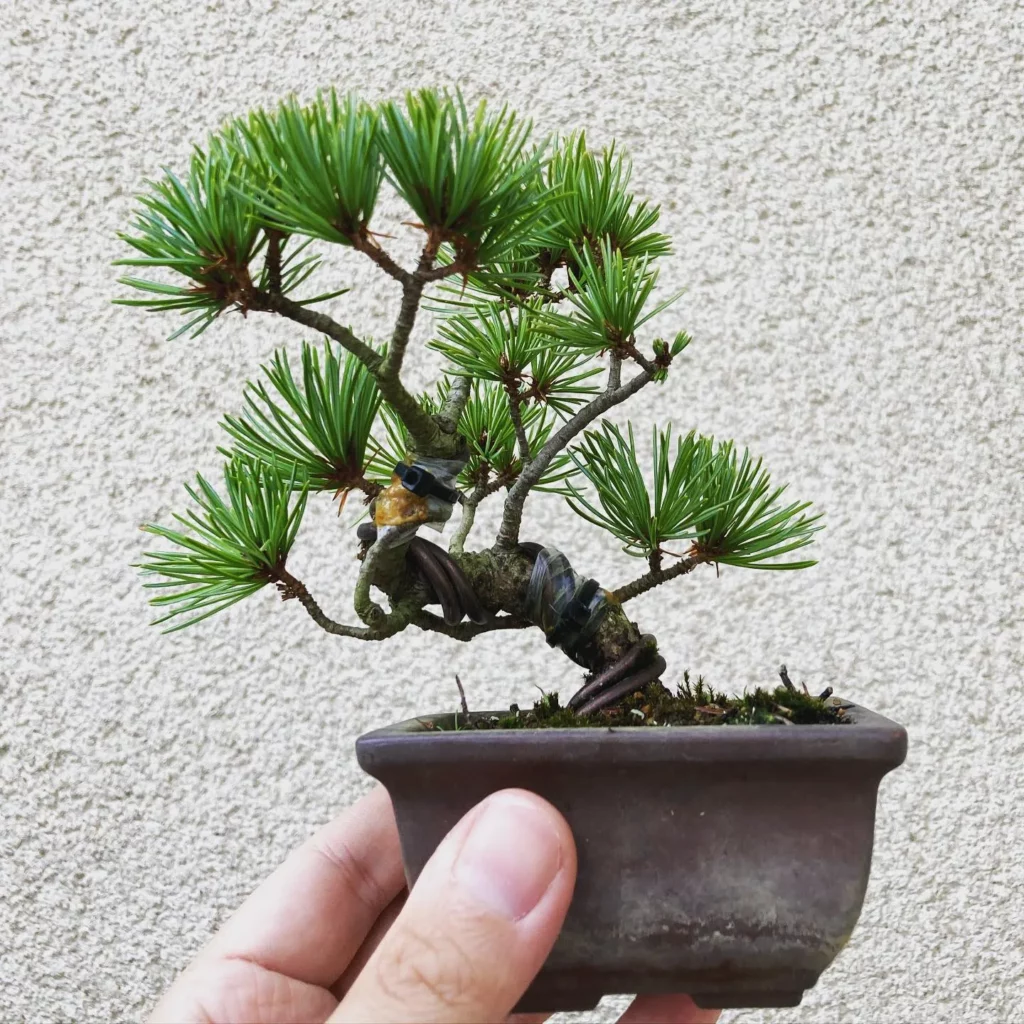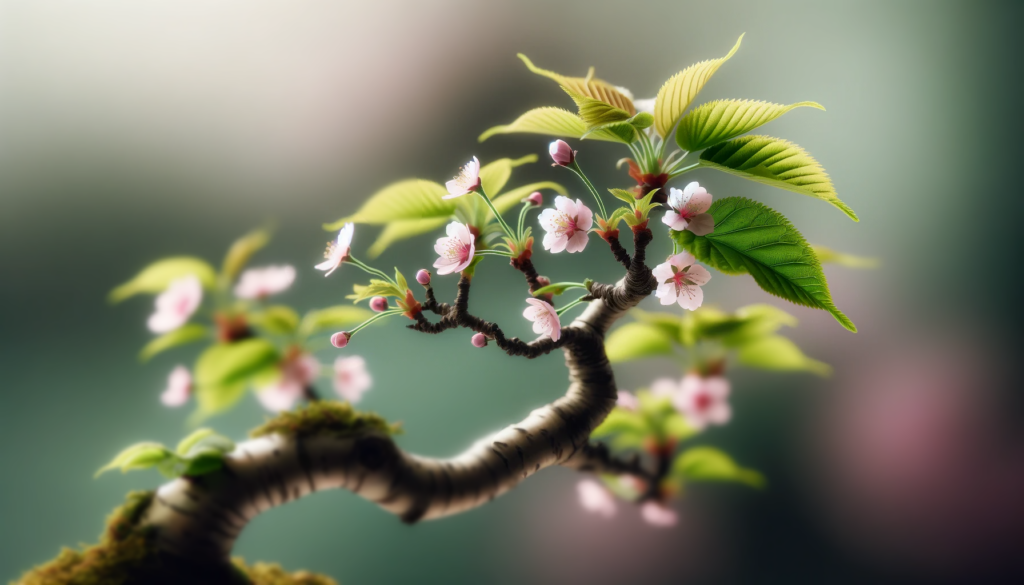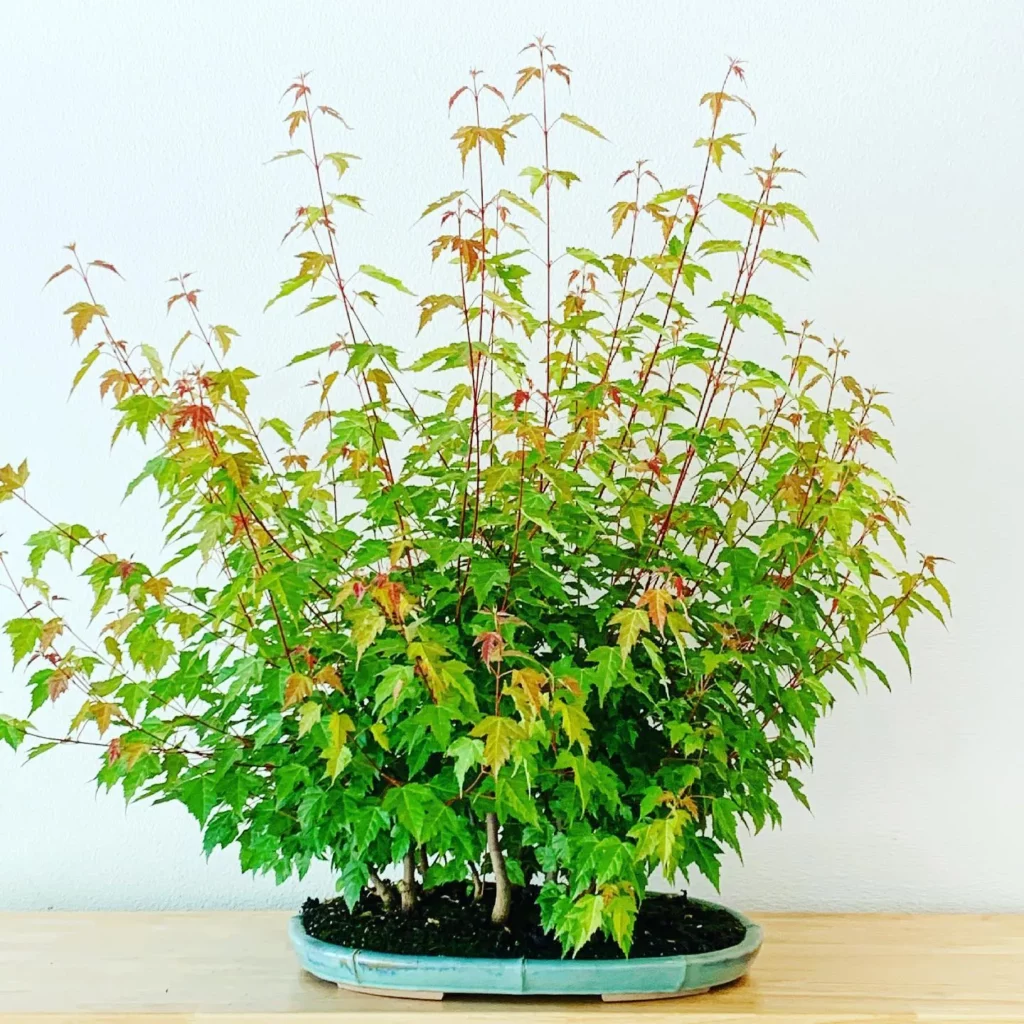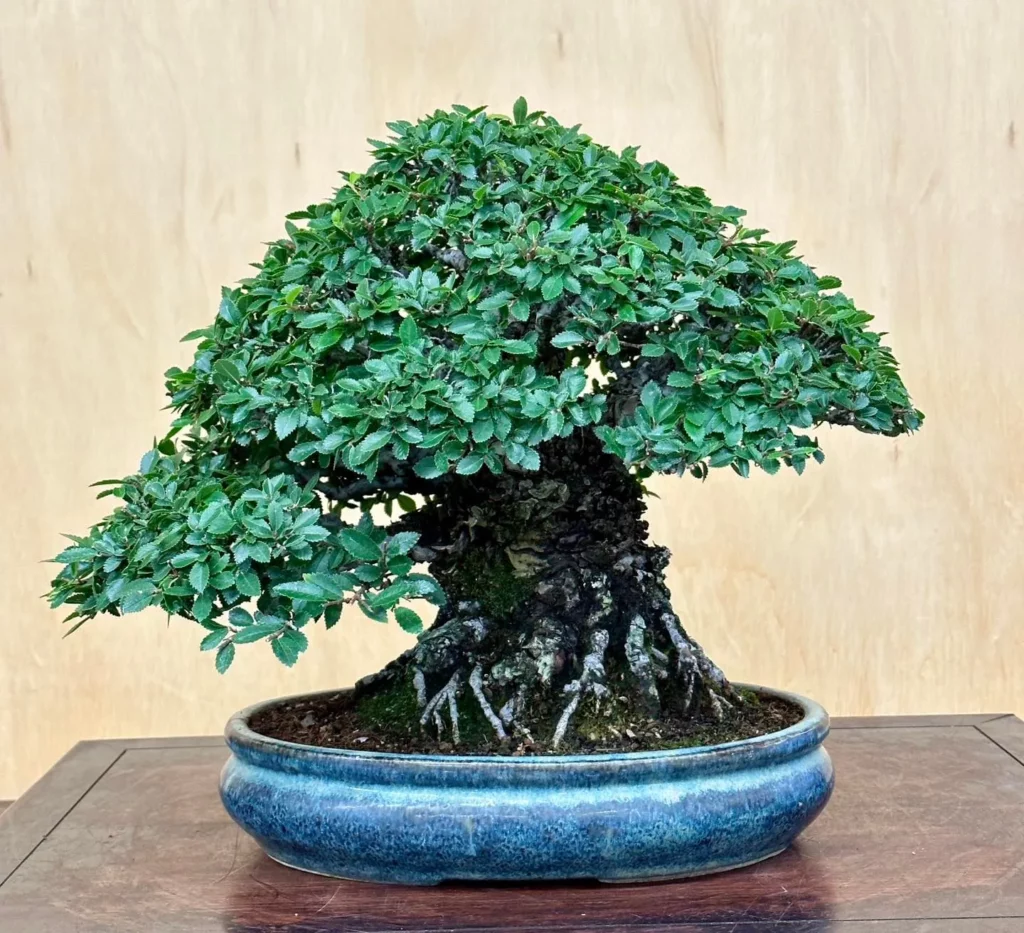Welcome to the world of bonsai trees, where the beauty of nature is captured in miniature form. To ensure the vitality and growth of your bonsai tree, proper fertilization is key. Bonsai trees, like their larger counterparts, require essential nutrients to thrive and maintain balanced growth. By providing the right nourishment, you can nurture these miniature wonders into stunning creations.
Nutrients play a vital role in the development of bonsai trees. They require a balance of macronutrients like nitrogen, phosphorus, and potassium, as well as micronutrients for healthy growth. These nutrients help in leaf production, root development, water regulation, and disease resistance.
Choosing the right bonsai tree fertilizer is crucial. There are organic and inorganic options, each with its own advantages. Organic fertilizers, derived from natural sources, are environmentally friendly and enhance soil health. In contrast, inorganic fertilizers provide quick-release nutrients. Deciding on the best type of fertilizer depends on your preferences and the specific needs of your miniature tree.
Regular fertilization is essential for the well-being of your bonsai. It prevents stunted growth and ensures that your tree remains healthy and vibrant. The frequency and amount of fertilizer application may vary based on the size and age of your bonsai. Additionally, applying fertilizer at the right time, when the soil is moist, will maximize its effectiveness.
Definition of Bonsai Tree
Bonsai is an art form that originated in China and Japan, symbolizing harmony, balance, and peace. The term “bonsai” comes from the Japanese words “bon” meaning tray or shallow container, and “sai” meaning tree.

Bonsai involves growing small trees in small pots or containers and shaping them into desired forms through careful pruning techniques. Different styles of bonsai include:
- Formal upright
- Informal upright
- Slanting style
- Cascade style
- Semi-cascade style
- Literati style
No products found.
In bonsai, the balance and harmony between the tree and its container are highly valued. The goal is to create a miniature representation of nature, capturing the beauty and serenity of a full-sized tree in a small-scale form. Bonsai enthusiasts carefully cultivate and shape the trees, striving to achieve a sense of tranquility and aesthetic perfection.
Importance of Bonsai Tree Fertilizer
Ensuring the health and vitality of your bonsai trees requires understanding the importance of proper fertilization. Bonsai trees, like their larger counterparts, rely on essential nutrients to support their growth and development. By providing the necessary nutrients through fertilization, you can optimize the health and longevity of your miniature wonders.
Fertilizers play a crucial role in supplying bonsai trees with the nutrients they need for optimal growth. These nutrients include nitrogen, phosphorus, potassium, and micronutrients, which are essential for photosynthesis, root development, flower and fruit production, and overall plant health.
Without adequate fertilization, bonsai trees may experience stunted growth, pale or yellowing leaves, and a weakened immune system, making them more susceptible to pests and diseases. Neglecting to fertilize your bonsai trees can even lead to their untimely demise.
Regular fertilization provides the necessary nutrients to support the tree’s metabolic processes and maintain its overall health. By strengthening the tree’s immune system, fertilizer helps protect against pests and diseases, ensuring that your bonsai thrives for years to come.
To achieve the best results, it is important to select fertilizer specifically formulated for bonsai trees. These fertilizers are designed to provide the right balance of nutrients and micronutrients for the unique requirements of miniature trees. Follow the manufacturer’s instructions for application rates and frequency to avoid over-fertilization, which can damage the roots.
By understanding the importance of bonsai tree fertilizer and providing your miniature trees with the nutrients they need, you can enjoy the beauty and artistry of these living works of art for many years.
Types of Fertilizers for Bonsai Trees
When it comes to fertilizing your bonsai trees, there are two main options to consider – organic bonsai fertilizer and inorganic bonsai fertilizer. Let’s explore the advantages of each:

Organic Bonsai Fertilizer
- Derived from natural sources like plants, animals, or minerals
- Safe for the environment and does not contain harmful chemicals
- Examples of organic bonsai fertilizers include compost tea, fish emulsion, and bone meal
Organic bonsai fertilizers provide a slow-release of nutrients, allowing for long-term nourishment and improved soil structure. They promote healthy root development, enhance microbial activity, and maintain overall plant health.
Inorganic Bonsai Fertilizer
- Synthetic compounds made from chemicals or minerals
- Provides quick-release nutrients to the trees
- Examples of inorganic bonsai fertilizers are chemical fertilizers and slow-release fertilizers
Inorganic bonsai fertilizers deliver nutrients to the plants more rapidly, offering a quick boost for their growth. However, they require careful application to avoid root burn and must be used in appropriate amounts.
Nutrients Required for Bonsai Trees
Bonsai trees, just like any other plants, require specific macronutrients and micronutrients to support their healthy growth. These nutrients play vital roles in various aspects of the tree’s development and overall well-being.

Macronutrients for Bonsai
Macronutrients are the essential elements that bonsai trees need in larger quantities. They include:
Nitrogen:
- Responsible for leafy growth, contributing to the lush appearance of the tree
- Aids in chlorophyll production, which is crucial for photosynthesis
Phosphorus:
- Promotes root development, ensuring a strong and healthy root system
- Stimulates flower and fruit production, adding aesthetic value to the bonsai
Potassium:
- Regulates water uptake within the tree, preventing water stress
- Improves disease resistance, enhancing the tree’s overall health
Micronutrients for Bonsai
While macronutrients are needed in larger quantities, micronutrients are equally important but required in smaller amounts. Some essential micronutrients for bonsai trees include:
- Iron
- Zinc
- Manganese
These micronutrients are critical for various physiological and metabolic processes in the tree, such as enzyme activation and nutrient uptake. They contribute to the overall growth and development of the bonsai tree.
How to Apply Bonsai Tree Fertilizer

Properly applying fertilizer is crucial for the health and growth of your bonsai tree. Follow these guidelines to ensure your bonsai gets the nutrients it needs:
- Frequency of Fertilization: During the growing season, which typically spans from spring to fall, bonsai trees should be fertilized regularly. Organic fertilizers such as compost tea and fish emulsion can be applied every two weeks to provide a steady supply of nutrients. Inorganic fertilizers, on the other hand, should be applied less frequently, following the instructions on the packaging.
- Amount of Fertilizer Application: The amount of fertilizer needed depends on the size and age of your bonsai tree. It’s important not to over-fertilize, as this can lead to root burn and damage the tree. Start with a conservative amount and adjust as needed based on the tree’s response and growth.
- Best Time to Fertilize Bonsai: Fertilizer should be applied when the soil is moist. This allows the tree’s roots to absorb the nutrients more effectively. It’s recommended to water the soil first before applying the fertilizer. Evenly distribute the fertilizer on the soil surface, ensuring that it reaches all parts of the root zone.
Placement Matters for Bonsai Trees
Proper placement is crucial for the care and well-being of your bonsai tree. Whether you have an indoor or outdoor bonsai, finding the right spot is essential to ensure its health and growth.
Indoor Bonsai Care
When it comes to indoor bonsai trees, they need to be placed in a location that receives bright, indirect sunlight. Ideally, choose a spot near east or west-facing windows where your bonsai can enjoy the gentle morning or afternoon sun.
Avoid placing your indoor bonsai tree in direct sunlight, as prolonged exposure can lead to leaf burn and stress. Finding a balance between light and shade is key to maintaining the health and vitality of your indoor bonsai.
Outdoor Bonsai Care
For outdoor bonsai trees, it’s important to choose a location that offers filtered sunlight or partial shade. This will protect your bonsai from intense sunlight and prevent the leaves from scorching.
Keep in mind that different bonsai tree species may have specific sunlight requirements, so it’s essential to research the specific needs of your outdoor bonsai. Some bonsai trees may thrive in full sun, while others prefer more shade.
Key Points to Remember
- Place indoor bonsai trees near east or west-facing windows for bright, indirect sunlight.
- Avoid direct sun exposure for extended periods to prevent leaf burn and stress.
- Outdoor bonsai trees should be placed in locations with filtered sunlight or partial shade.
- Research the sunlight requirements of your specific bonsai tree species for optimal care.
Pruning and Shaping Your Bonsai
Regular pruning and shaping are crucial for maintaining the aesthetic appeal of your bonsai trees. By following proper pruning techniques and shaping methods, you can help encourage healthy branching, control the growth, and maintain the desired shape of your bonsai. Here are some essential tips and techniques to help you prune and shape your bonsai effectively:
1. Pruning Bonsai:
- Pruning involves the selective removal of branches or foliage from your bonsai.
- Use sharp and clean tools such as bonsai shears or scissors to make precise cuts.
- Trimming back the branches helps maintain the desired shape and encourages new growth.
- Regularly remove any dead, damaged, or diseased branches to promote overall tree health.
- Consider the growth pattern of your bonsai and prune accordingly to balance the branches and maintain a natural appearance.
2. Shaping Bonsai:
- Shaping involves manipulating the branches and trunk of your bonsai into the desired position or form.
- Wire is commonly used for shaping bonsai branches. Gently wrap the wire around the branch and carefully bend it to the desired position.
- Ensure the wire is not too tight to avoid damaging the branch. Regularly check and adjust the wired branches to prevent any wire cutting into the bark as the tree grows.
- Consider the aesthetics and natural growth pattern of the tree when shaping, aiming for a balanced and harmonious appearance.
Growing and Cultivating Bonsai
Growing and cultivating bonsai trees requires careful attention to their needs and regular maintenance. To ensure the health and development of your bonsai, it is important to follow essential practices such as repotting, using the right bonsai soil mix, and providing appropriate care for growth.
Repotting Bonsai
Repotting is a vital aspect of bonsai tree cultivation. It is recommended to repot your bonsai every two to three years, preferably during the spring or early summer. Repotting allows the roots to breathe and absorb nutrients more efficiently. When repotting, carefully trim and prune the roots to maintain their size in proportion to the tree’s growth.
Bonsai Soil Mix
Choosing the right bonsai soil mix is crucial for the health and longevity of your bonsai tree. Bonsai soil should be well-draining to prevent waterlogging and provide adequate aeration to the roots. Different tree species have specific soil requirements, considering factors such as water retention and drainage. You can either opt for a commercial bonsai soil mix or create your own mix by combining components like Akadama, pumice, and lava rock.
No products found.
Bonsai Tree Growth and Cultivation
Fertilizing is essential for supporting the growth of your bonsai tree. During the growing season, which typically spans from spring to fall, use a balanced liquid or granular fertilizer to promote healthy growth. Regularly monitor the growth of your bonsai tree and adjust the fertilization frequency accordingly.
Additionally, consider factors such as climate, available care time, and aesthetic preferences when selecting the right bonsai tree species for cultivation. Each species has specific care needs, so ensure you research and cater to those requirements to optimize growth and overall health.
- Regularly repot your bonsai every two to three years to maintain root health and efficient nutrient absorption.
- Choose a well-draining bonsai soil mix that suits the specific tree species to ensure optimal growth conditions.
- Fertilize your bonsai during the growing season with a balanced liquid or granular fertilizer to promote healthy growth.
- Select the right bonsai tree species based on your climate, available care time, and aesthetic preferences to ensure successful cultivation and long-term satisfaction.
Choosing the Right Bonsai Tree Soil
The health of your bonsai trees depends greatly on selecting the right soil. Opting for soil that is well-draining is crucial to prevent waterlogging and provide adequate moisture for the roots. There are two options for bonsai soil: commercial bonsai soil mixes or creating your own DIY mix.
Commercial bonsai soil mixes are readily available and offer convenience. These mixes are usually well-balanced and specifically designed to promote healthy root growth. However, keep in mind that the specific blend may vary depending on the tree species and local climate.
If you prefer a more hands-on approach, you can create your own bonsai soil mix. The DIY mix typically consists of components like Akadama, pumice, and lava rock. Akadama, a Japanese clay, provides good water retention and aeration, while pumice and lava rock aid in drainage. Customizing your mix allows you to tailor it to your bonsai’s specific needs.
Whether you opt for a commercial bonsai soil mix or create your own DIY blend, selecting the right bonsai soil is essential for optimal root health and growth. Take into consideration the specific requirements of your tree species and local climate to ensure the best possible growing conditions.
After this check out our other articles on:
FAQ
What is bonsai tree fertilizer?
Bonsai tree fertilizer is a nutrient solution that is applied to miniature trees grown in containers to maintain their health and promote balanced growth.
Why is fertilizer important for bonsai trees?
Fertilizer is crucial for bonsai trees as it provides essential nutrients like nitrogen, phosphorus, potassium, and micronutrients that are necessary for growth and development. Without proper fertilization, bonsai trees may experience stunted growth or even death.
What are the types of fertilizers for bonsai trees?
There are two main types of fertilizers for bonsai trees: organic and inorganic. Organic fertilizers are derived from natural sources, while inorganic fertilizers are synthetic compounds. Each type has its own advantages and disadvantages.
What nutrients do bonsai trees require?
Bonsai trees require macronutrients like nitrogen, phosphorus, and potassium in larger quantities, as well as micronutrients like iron, zinc, and manganese in smaller amounts. These nutrients are essential for the overall growth and development of the tree.
How often should I fertilize my bonsai tree?
Bonsai trees should be fertilized regularly during the growing season, which is from spring to fall. Organic fertilizers can be applied every two weeks, while inorganic fertilizers should be applied less frequently. The frequency of fertilization also depends on the tree’s size and age.
Where should I place my bonsai tree?
Indoor bonsai trees should be placed in bright, indirect sunlight near east or west-facing windows. Outdoor bonsai trees should be placed in locations that receive filtered sunlight or partial shade to prevent direct sun exposure for extended periods.
How do I prune and shape my bonsai?
Pruning helps encourage branching and maintain the desired shape of the bonsai tree. Shaping involves using wiring to guide branches into the desired positions. It’s important to use sharp and clean tools, avoid over-pruning, and periodically check and adjust wired branches to prevent damage to the tree.
How often should I repot my bonsai tree?
Bonsai trees should be repotted every two to three years during the spring or early summer. This allows the roots to breathe and absorb nutrients more efficiently.
What kind of soil should I use for my bonsai tree?
Bonsai soil should be well-draining to prevent waterlogging and retain enough moisture for the roots. Commercial bonsai soil mixes are available, or you can create your own mix using components like Akadama, pumice, and lava rock.
Note: Please note that the number of FAQ’s in your original post was not specified, so I have provided the most relevant frequently asked questions based on the given information.




